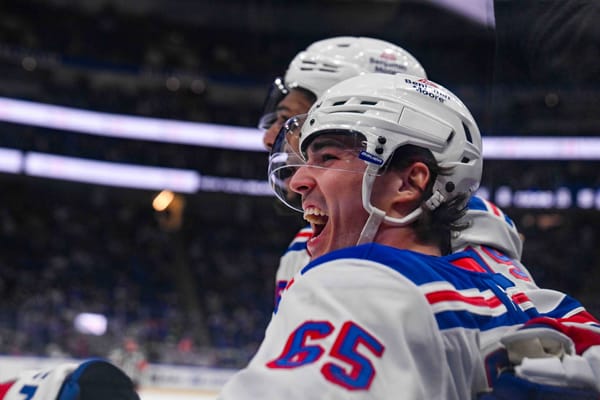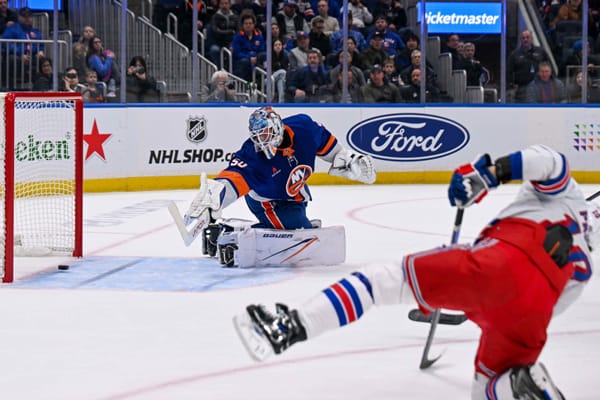Blueshirt Banter 2018 NHL Draft Rankings - #17 Jonatan Berggren
Jonatan Berggren, Skellefteå (Swedish Hockey League)
Vitals
Position: Center/Right Wing
Age on Draft Day: 17.95 Years Old
Height/Weight: 5’10, 183 pounds
2017-2018 Stats (SHL): 10 GP, 0 G, 0 A, 0 PIM, -3
2017-2018 Stats (SuperElit): 38 GP, 18 G, 39 A, 34 PIM, +24
Draft Rankings
NHL Central Scouting: 30th (European Skaters)
Scott Wheeler (The Athletic): 20th
Corey Pronman (The Athletic): 24th
Jeremy Davis (Canucks Army): 25th
ISS Hockey: 30th
HockeyProspect.com (March): (Not top-31)
Craig Button (TSN) (March): 32nd
Future Considerations: 44th
Scouting Report
Tobias
Jonatan Berggren is one of the youngest and most intriguing prospects in this draft. He’s a great skater and has high-end skill. It’s combination which makes him very dangerous in one-on-one situations. He plays mostly at center, but given his playing style it wouldn’t surprise me if he ends up more as an off-side winger. He’s not big, but he’s got a very strong lower body and a low center of gravity which makes him pretty strong on the boards despite his size. He uses his skating effectively on the forecheck, too.
This all sounds amazing, so why isn’t he ranked even higher? Well, he does have some flaws in his game. His shot isn’t great, and it’s something he definitely needs to work on. He’s also kind of small for the type of game he plays, which could limit him going forward. Another issue is that he spent almost the entire season in juniors. He didn’t stick in SHL, and in his small sample but his underlying numbers weren’t good either.
The team that drafts Berggren will need to be patient with him, but the upside is there. If given time to develop, I think he has a good chance of becoming a top-six forward in the NHL one day.
Adam
Berggren was a player whom I noticed immediately at the 2017 World Junior Summer Showcase. That’s no small feat, given that he was practically a 16-year-old playing in a tournament full of older players.
Berggren is a dynamic offensive forward. His ability to slip past defenders is immediately noticeable. While he’s not a great skater - merely a good one - he is incredibly shifty on his skates and sees holes and lanes opening as they develop. He creates a lot of clean zone entries by taking the puck down the wing, and also loves to push to puck ahead of him and skate onto it. As a result, he makes defenders whiff often, and draws a number of penalties. Here are some examples of these types of plays.
He is definitely a pass-first forward. Berggren has tremendous puck poise and is constantly moving his feet around the offensive zone. In the process, he forces bodies to move around with him and passing lanes open up. What’s more, he has the vision and finesse to immediately spot developing plays and then make pinpoint passes from seemingly innocuous situations. We have talked ad nauseam about why passing plays across the slot are so crucial to scoring goals in the modern NHL, and Berggren can make it happen.
Unsurprisingly, he can score some creative goals as well. While his wrist shot is relatively average, he has a knack for slipping into open spaces in the slot, where he can receive a pass. Berggren is also very capable of creating his own shot.
Berggren was absolutely dominant in the SuperElit (Sweden’s top junior league) this season, averaging a point-and-a-half per game. That puts him sixth all-time in the SuperElit for a 17-year-old forward, above the likes of Frans Nielsen, William Karlsson, and Lars Eller among others.
He also played exceptionally well in international games; particularly at the U18 World Championship in April, where he produced five goals and five assists in seven games and lead Sweden in points by a fair margin.
However, his short time in the Swedish Hockey League was a struggle. Including playoffs, he produced just one assist in 12 games and had poor underlying numbers. For a 17-year-old getting limited minutes, though, that’s pretty understandable.
Admittedly, I was somewhat apprehensive about ranking Berggren this high. Even the more progressive draft rankers put Berggren in the mid-20s. Nonetheless, as I repeatedly parsed through the list of remaining players with Tobias, there was nobody who could convincingly jump him on my list. Furthermore, our friend Alex, who watches more Swedish hockey at all levels than practically anyone, agreed that Berggren belonged in the top-20.
Are there other forwards who are more polished and have a higher chance of reaching the NHL? Yes. We’ll be profiling some of them in the coming days. There are a handful of others who are safe bets as bottom-six forwards.
But relatively speaking, it’s not overly difficult for teams to add depth. Plenty of great options are available in the bargain bin every summer, and when all else fails a third-round pick will get the job done at the trading deadline.
Dynamic offensive forwards, though, are very difficult to add. Teams either have to pay at an exorbitant rate through trade or cross their fingers that a top free agent will sign in their late 20s. The draft offers teams their best opportunity at adding that kind of talent, and so teams need to seek it out.
What matters is not the player Berggren is now, but the player he could be in five years. Born in mid-July, he is one of the youngest players in this draft. I also think a move to wing full-time would do him wonders. Perhaps the size is a concern down the middle, but I also think moving him to the wing would optimize his strengths while reducing his responsibilities, resulting in even better offensive production. He has the hands and creativity to make offense happen in so many different ways, and he’s therefore a pain for opposing teams to manage. I look at Berggren and see a player who could make some massive jumps in ability in the next few years. So while Berggren might not be the safe pick, I think he is the right one.
Berggren is a tricky prospect for the Rangers because of the number of selections they have. He will most likely be available to them at 26th or 28th overall, and there is no doubt in my mind that Berggren is a top-31 talent in this draft. However, they also have selections at 39 and 48. This is a situation where opposition research would be beneficial, because if the consensus among NHL scouts is that Berggren is a late-second or early-third round prospect, then the Rangers could wait until the second round to grab him. On the other hand, you don’t want to get too cute and lose a top-20 player on your board because another team takes him, let’s say 40th overall. Regardless, Berggren should absolutely be on the radar when the Rangers are on the clock.
What Others Have Said
Skellefteå General Manager Mikael Lindgren (via Enköpings-Posten):
“With a good summer training, I think he is ready to take the next step with us.”
Scott Wheeler, The Athletic:
“I see a small kid who dominated SuperElit in almost historic ways and was only rewarded with seven minutes a night during a short 10-game stint with a very good (SHL) team.”




